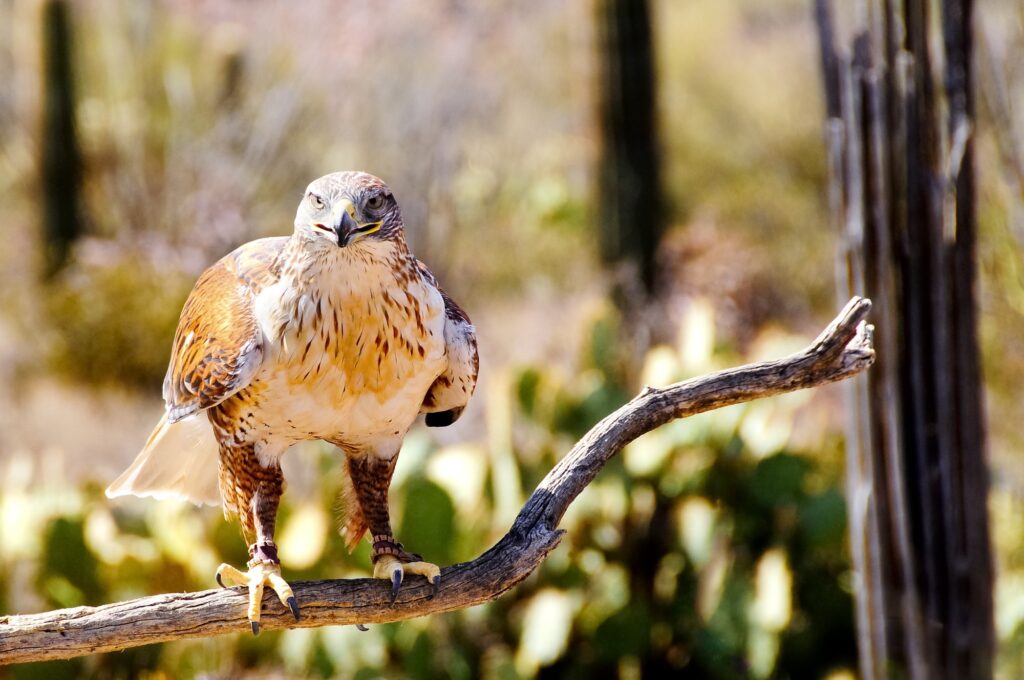Whether you’re there for sight-seeing, a job opportunity, or call the Tar Heel State home, you’ll find there’s something in North Carolina that appeals to you. Its breathtaking weather, for example, makes it a top destination for those looking to visit Biltmore, camp in the Pisgah National Forest, or watch the sunset at Cape Hatteras Lighthouse.
If you’re a nature-lover, you’ll encounter many animals, including opossums, black bears, white-tailed deer, flying squirrels, snakes, and hawks…lots and lots of hawks. To be more specific, there are 9 different species of these majestic birds roaming the skies of North Carolina.
It may be a bit difficult to differentiate between them, though, which is why we’re going to give you a bit of information about these birds so you’ll be able to identify whatever hawk you come by in this southeastern state.
Osprey
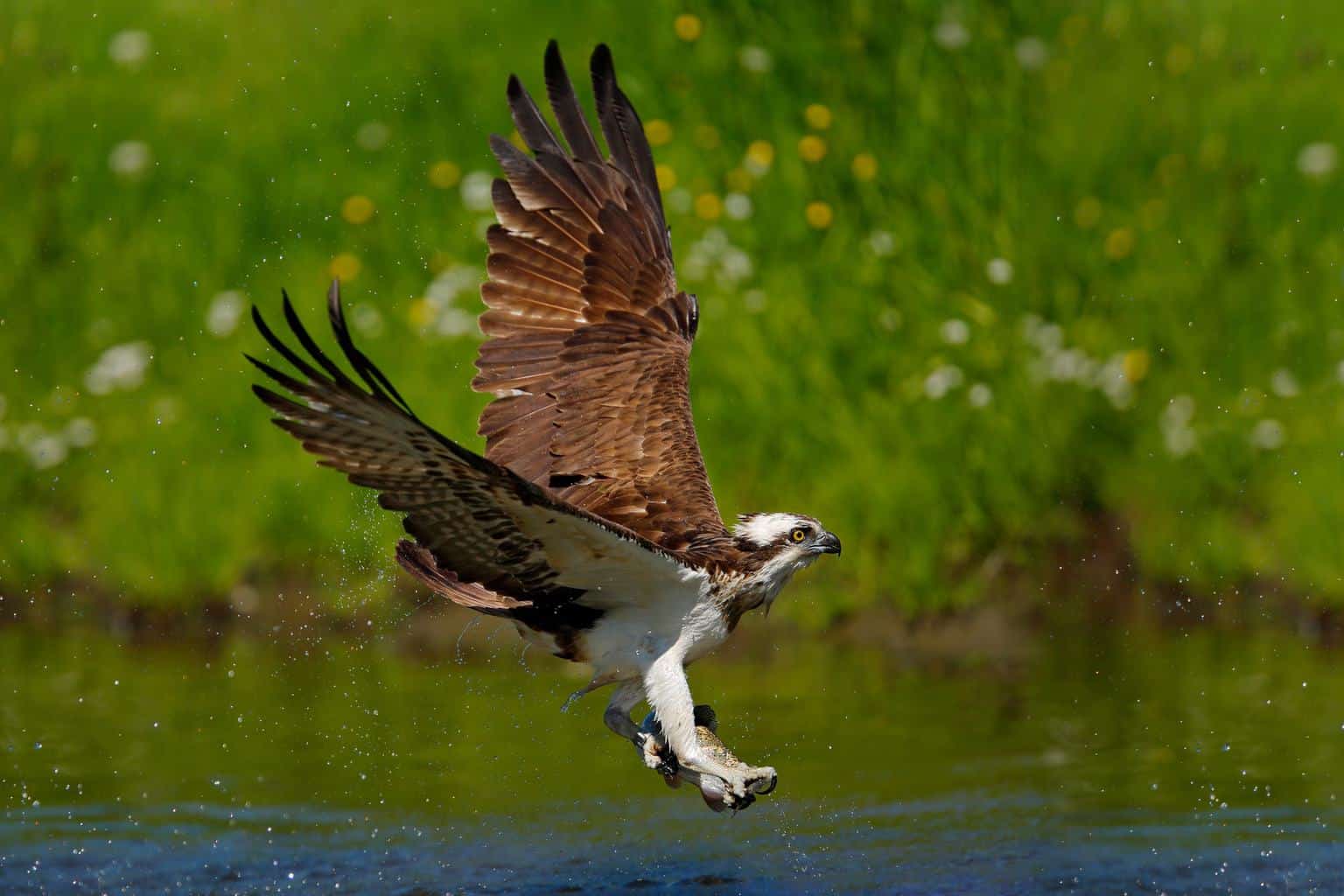
-
Scientific Name: Pandion haliaetus
-
Length: 26 inches
-
Weight: 49.3 ounces
-
Wingspan: 67 inches
The osprey, or fish hawk, is the largest native hawk of North Carolina. But here’s the kicker: it’s technically not a hawk. These birds used to be classified in the hawk family, but now they exist in a family of their own. So, why did the osprey make the cut? Because they look and act like their hawk cousins!
As evident by its name, the fish hawk, this bird survives on a diet that is 99 percent fish. For this reason, you’ll usually find ospreys near seashores, bays, ponds, reservoirs, and anywhere where there are fish to consume.
Ospreys don’t panic when there aren’t fish readily available to eat. Instead, they adapt, turning to insects, muskrats, squirrels, and lizards for sustenance.
Cooper’s Hawk
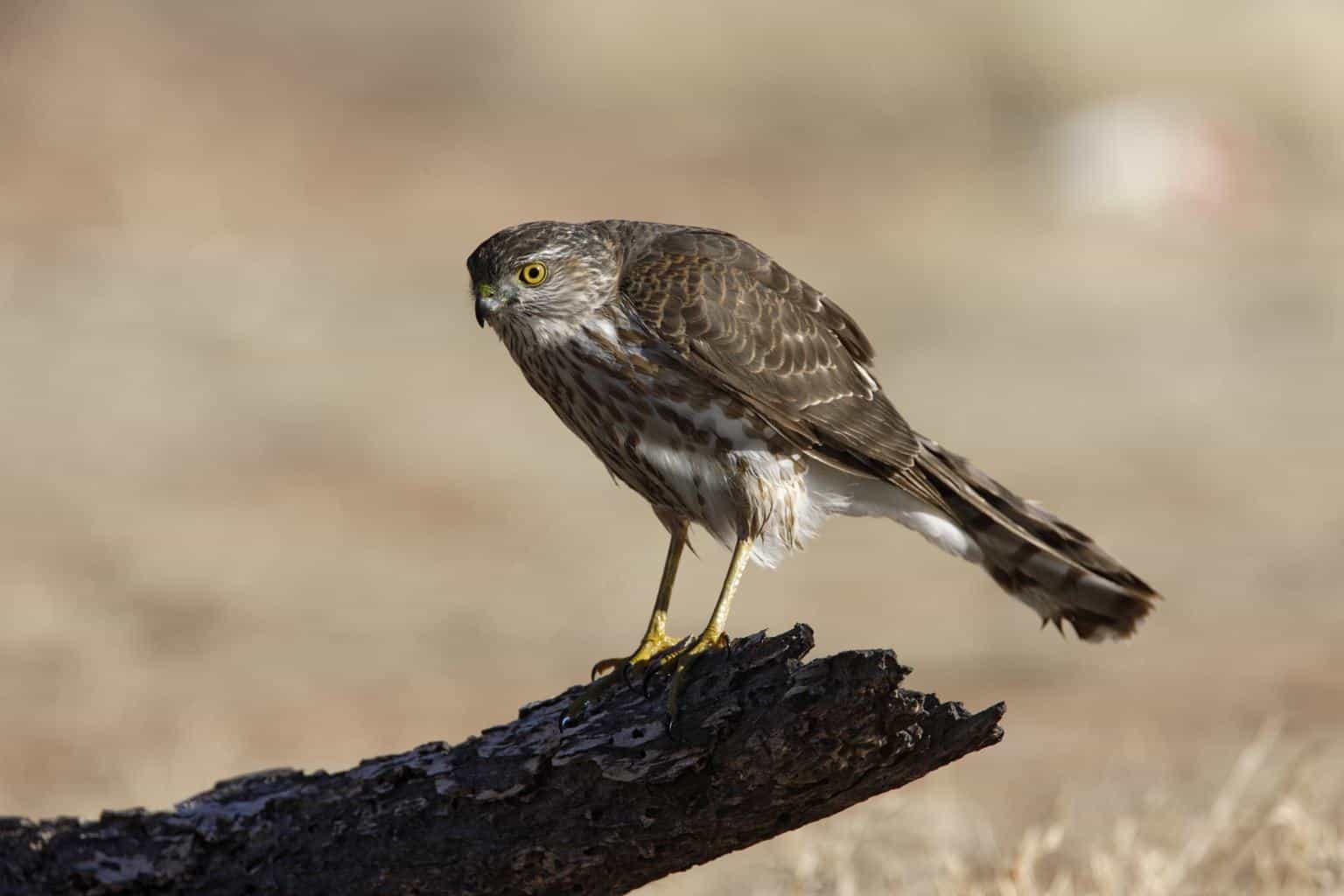
-
Scientific Name: Accipiter cooperii
-
Length: 14 – 19 inches
-
Weight: 10 – 24 ounces
-
Wingspan: 28 – 34 inches
The distribution of Cooper’s hawks in America is quite indefinite since they tend to migrate, but you’ll likely find this species of hawks in North Carolina year-round. Just take a hike through a wooded forest area, or look up the next time you’re in a tree-heavy suburban area. Like other accipiters, they fly in a flap-flap-glide pattern, so you’ll be able to spot them as they’re in flight.
Cooper’s hawk mainly eats other birds and small mammals, but it’s not above eating reptiles or insects, too. You’ll recognize these predators as they hunt for food by their bluish-gray backs, red-barred underparts, and dark-banded tails.
Red-Shouldered Hawk
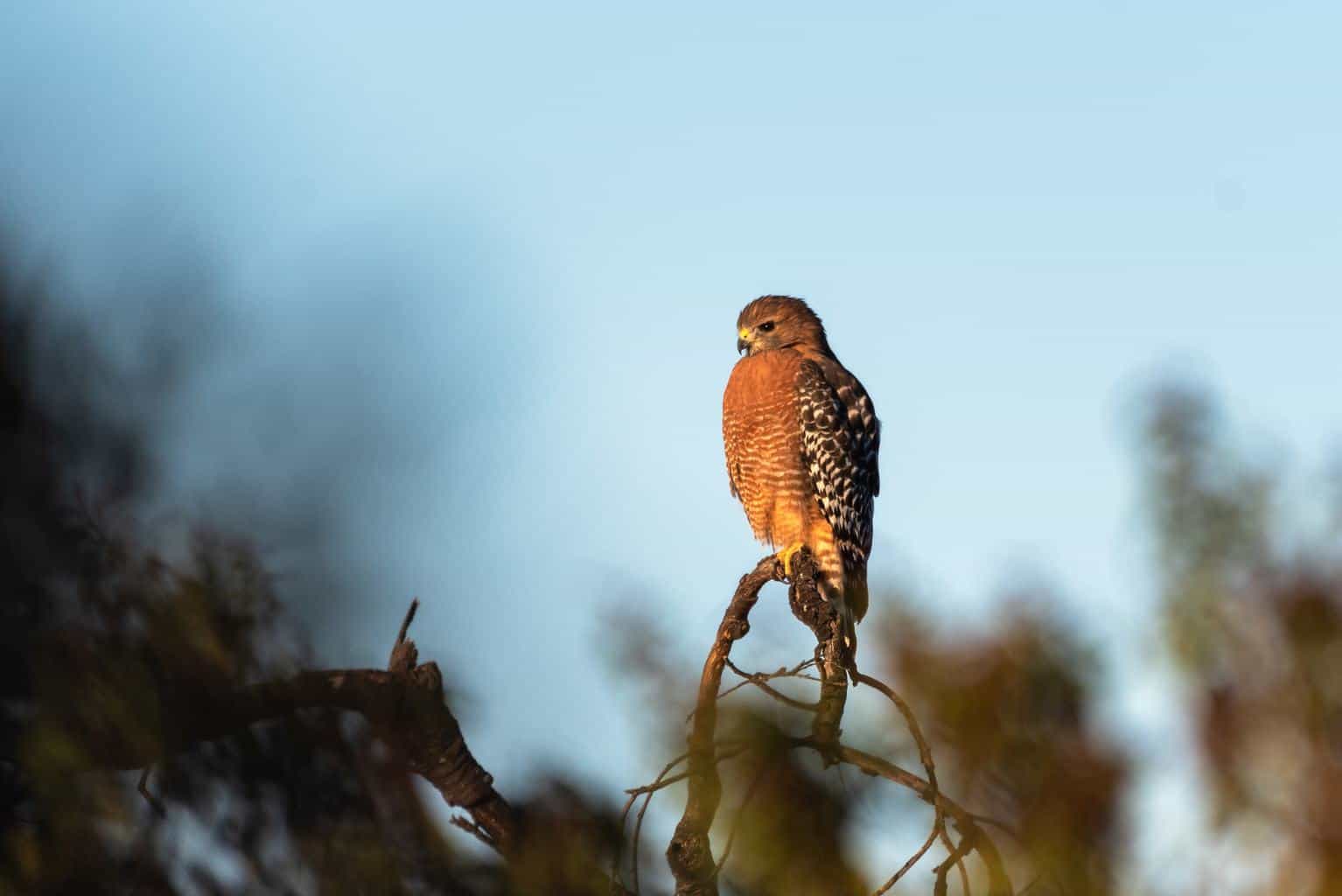
-
Scientific Name: Buteo lineatus
-
Length: 16.9 – 24.0 inches
-
Weight: 17.1 – 27.3 ounces
-
Wingspan: 37.0 – 43.7 inches
Though once abundant in North Carolina, pesticides and loss of suitable habitats largely contributed to the decline of the population of these birds, so spotting a red-shouldered hawk in this state may be more difficult than it once was.
Just as their names say, red-shouldered hawks have brownish-red spots on their shoulders, but those feathers may be hard to spot from a distance, so they aren’t the most reliable identifier of this species. Instead, look for its black and white checkered wings while you search for them near swampy lowlands, streams, and rivers.
Like most other hawks, the red-shouldered birds eat small mammals, amphibians, snakes, and lizards, but don’t be surprised if you find birds of this species eating fish, insects, or crustaceans, too.
Red-Tailed Hawk
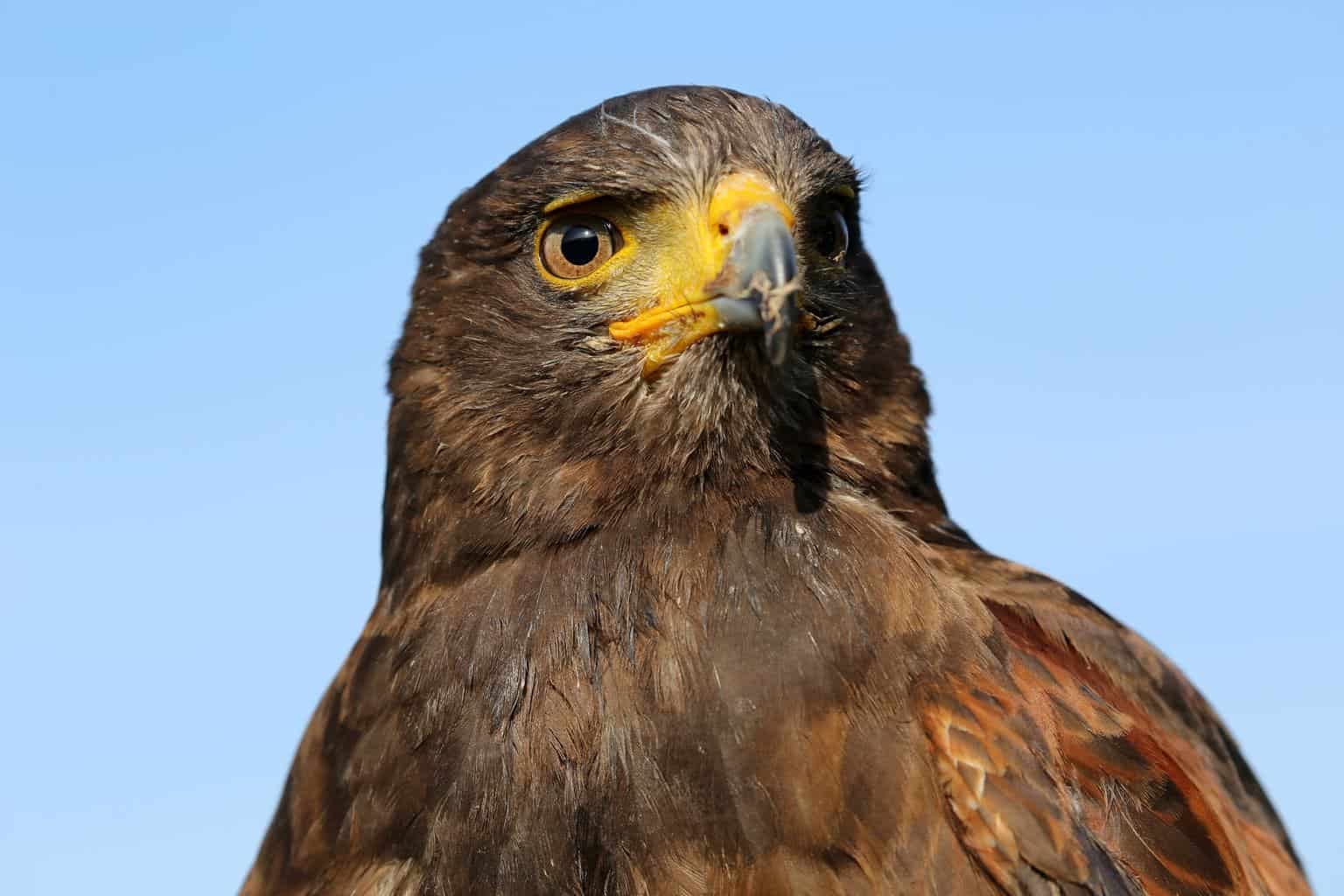
-
Scientific Name: Buteo jamaicensis
-
Length: 15-19 inches
-
Weight: 17.6 – 32 ounces
-
Wingspan: 37- 42 inches
If you’ve ever heard anyone talking about a chicken hawk, chances are they were referring to the red-tailed hawk species. This nickname comes from these birds’ occasional tendency to attack poultry.
Red-tailed hawks, of course, sport brownish-red tails and a light V on their backs, but interestingly enough, partial albinos are common among this species. Because they prefer soaring high in the sky, you’ll usually find them in open fields and wooded areas.
As for their meals, red-tailed hawks feed on mice, rats, moles, chipmunks, rabbits, weasels, squirrels, and rodents. They also eat snakes, insects, and other birds from time to time.
Rough-Legged Hawk
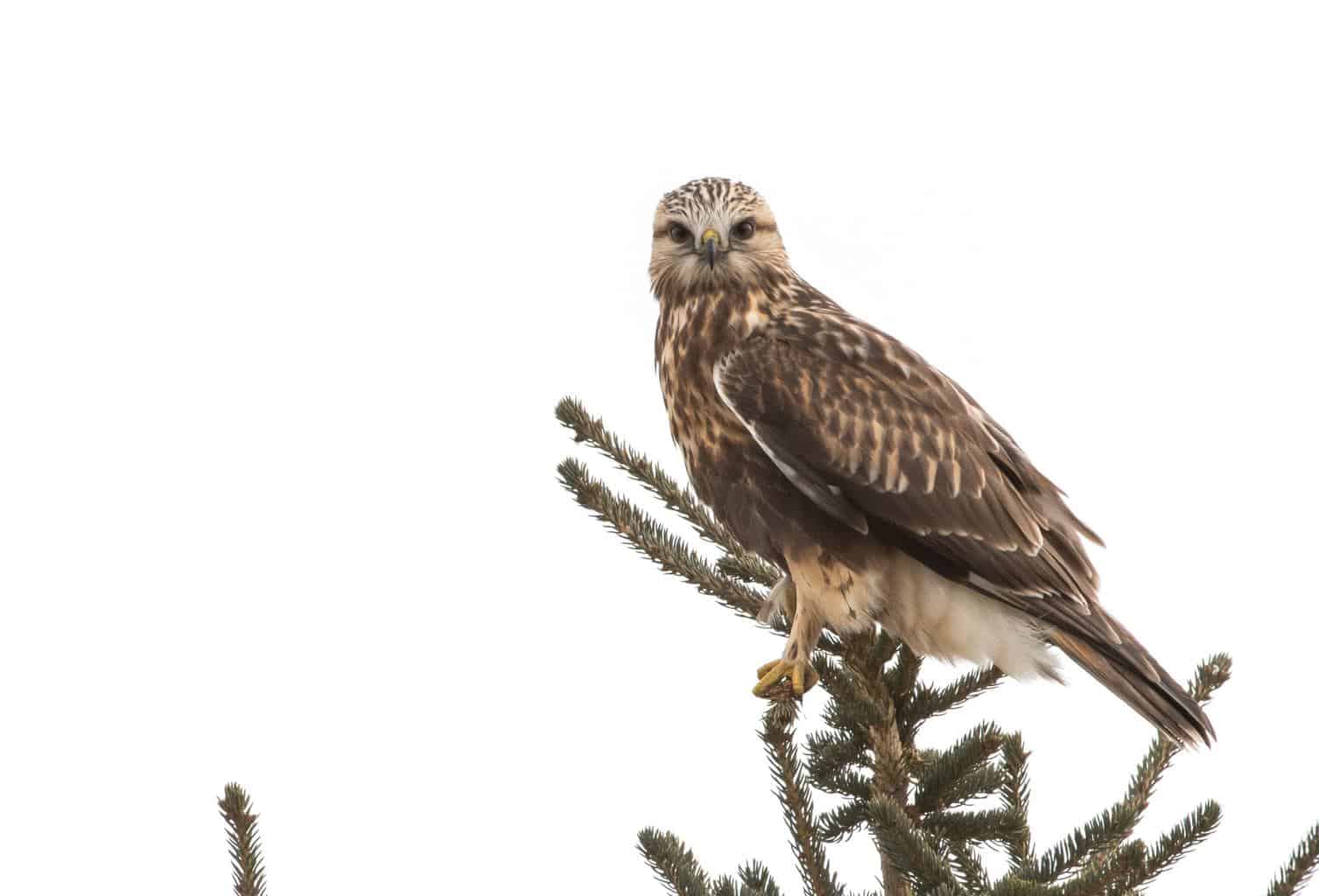
-
Scientific Name: Buteo lagopus
-
Length: 18 – 24 inches
-
Weight: 24 – 51.2 ounces
-
Wingspan: 47 – 54 inches
Rough-legged hawks’ diverging feathers on their legs give them their namesake “rough” legs. They, along with ferruginous hawks and golden eagles, are one of only three North American raptors to boast this physical trait. These birds also have a dark band on their seemingly white chests, and they occur in two different color morphs, light, and dark.
Light rough-legged hawks have pale underwings with dark patches, and dark morphs are almost totally brown.
This species likes to hunt while soaring and therefore prefers spending its days in more open, treeless areas like grasslands, marshlands, river deltas, agricultural fields, and shrub-steppes. Rough-legged hawks hunt for and consume a wide range of animals, including both small and large mammals and several bird species.
Ferruginous Hawk

-
Scientific Name: Buteo regalis
-
Length: 22 – 27 inches
-
Weight: 36 – 72 ounces
-
Wingspan: 53 – 60 inches
Perhaps the king of the North Carolina hawks is the ferruginous hawk; after all, they’re the largest buteos in North America and are often referred to as “royal” because of their size. You can find these large birds in groups of five to 10 in forests, cliffs, and grasslands.
These hawks tend to avoid areas with high elevation, narrow canyons, or forest interiors since those spots don’t mesh well with their breeding habits. When it’s time for our ferruginous friend to eat, it sets out searching for prairie dogs, ground squirrels, cottontail, and jackrabbits.
Like many other species of hawks, the ferruginous birds occur in light and dark morphs. Lighter ferruginous hawks have white feathers on their underparts and rust-colored legs, while dark members of the species are a deep shade of chocolatey brown.
Sharp-Shinned Hawk
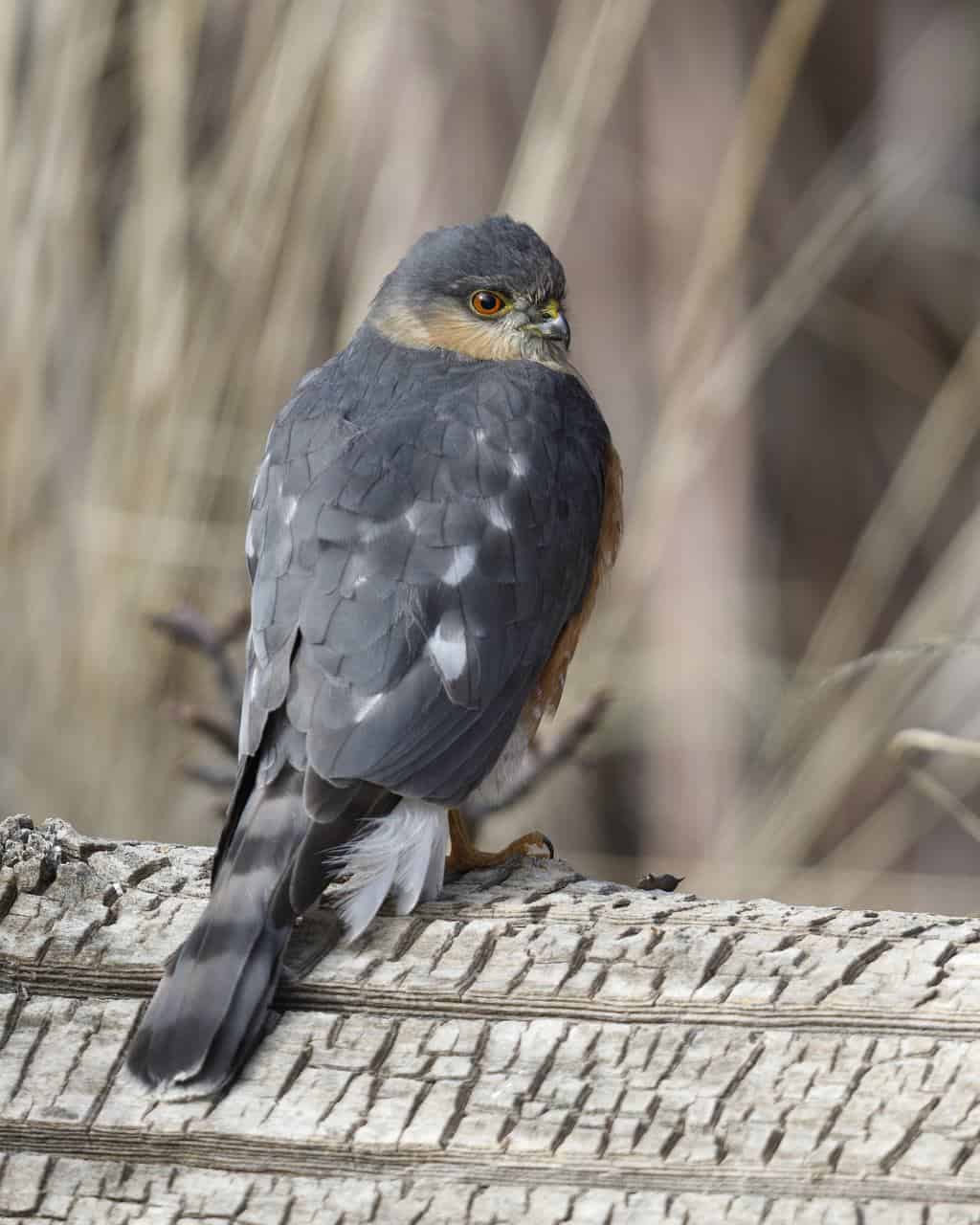
-
Scientific Name: Accipiter striatus
-
Length: 9 – 13 inches
-
Weight: 3 – 8 ounces
-
Wingspan: 20 – 26 inches
Did you know the tiny but mighty sharp-shinned hawks are known for their stealthy hunting skills? They sit and wait under the cover of foliage and wait for their prey to approach them, or sneakily pursue their potential victims until they can swiftly snatch them up in their claws.
These sharp-shinned birds eat insects, lizards, frogs, small mammals, and birds. Although declining in number, these raptors are seen in forest canopies in North Carolina during the breeding season.
Swainson’s Hawk
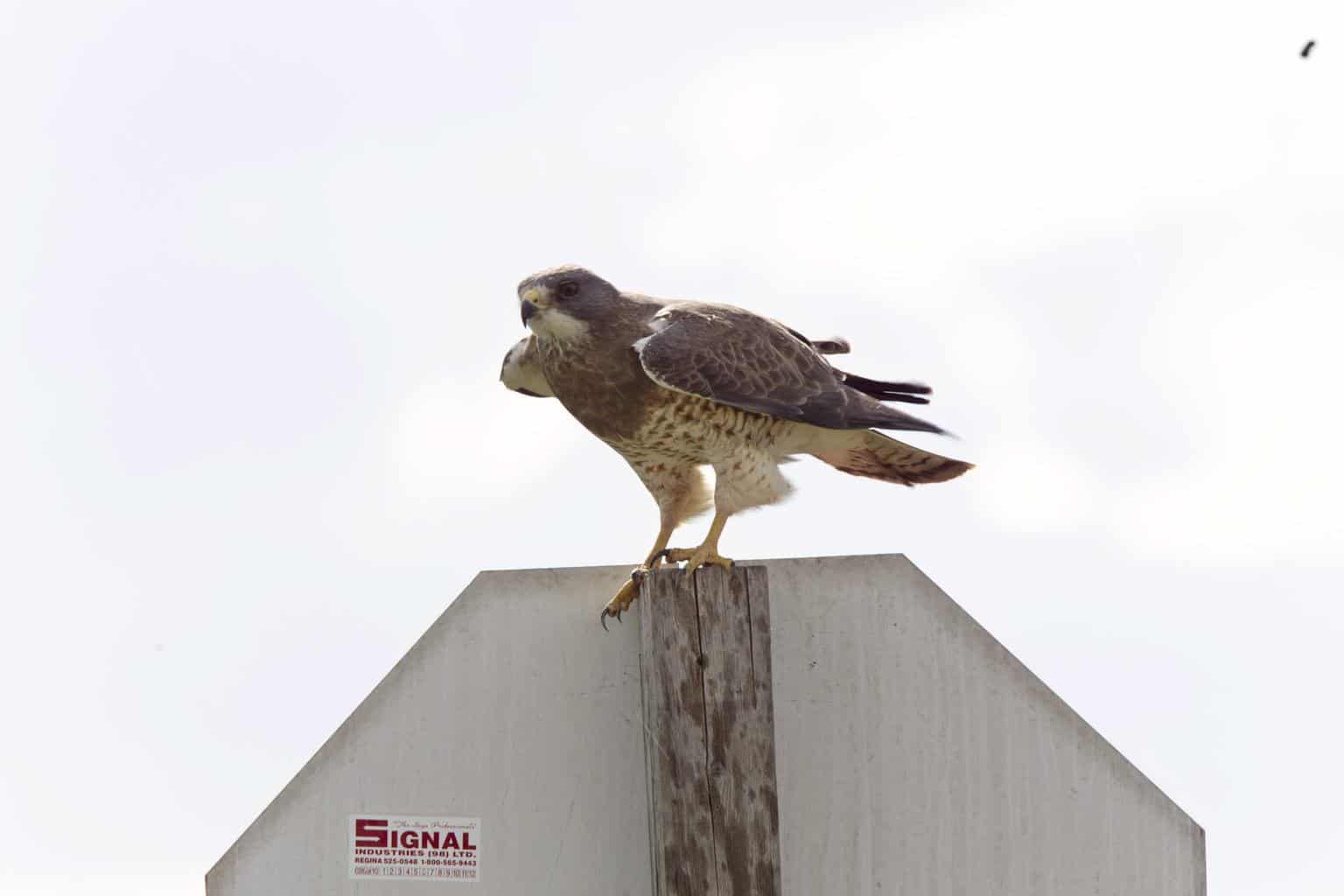
-
Scientific Name: Buteo swainsoni
-
Length: 18 – 22 inches
-
Weight: 24 – 48 ounces
-
Wingspan: 47 – 54 inches
Named after English naturalist William Swainson, Swainson’s hawks are built a bit differently than their buteo brethren with slimmer bodies and narrower wings.
Depending on their life cycle, Swainson’s hawk can be found in a variety of areas, mainly grass-dominated fields. Don’t get too disappointed if you don’t spot one of these birds in North Carolina, though; they’re rather rare in this state, and if you hope to find one here, you’ll need to search near the coast.
Swainson’s hawks are capable of ingesting vertebrates, including mammals, birds, and reptiles. During breeding periods, however, they feed on moths, butterflies, and grasshoppers.
Broad-Winged Hawk
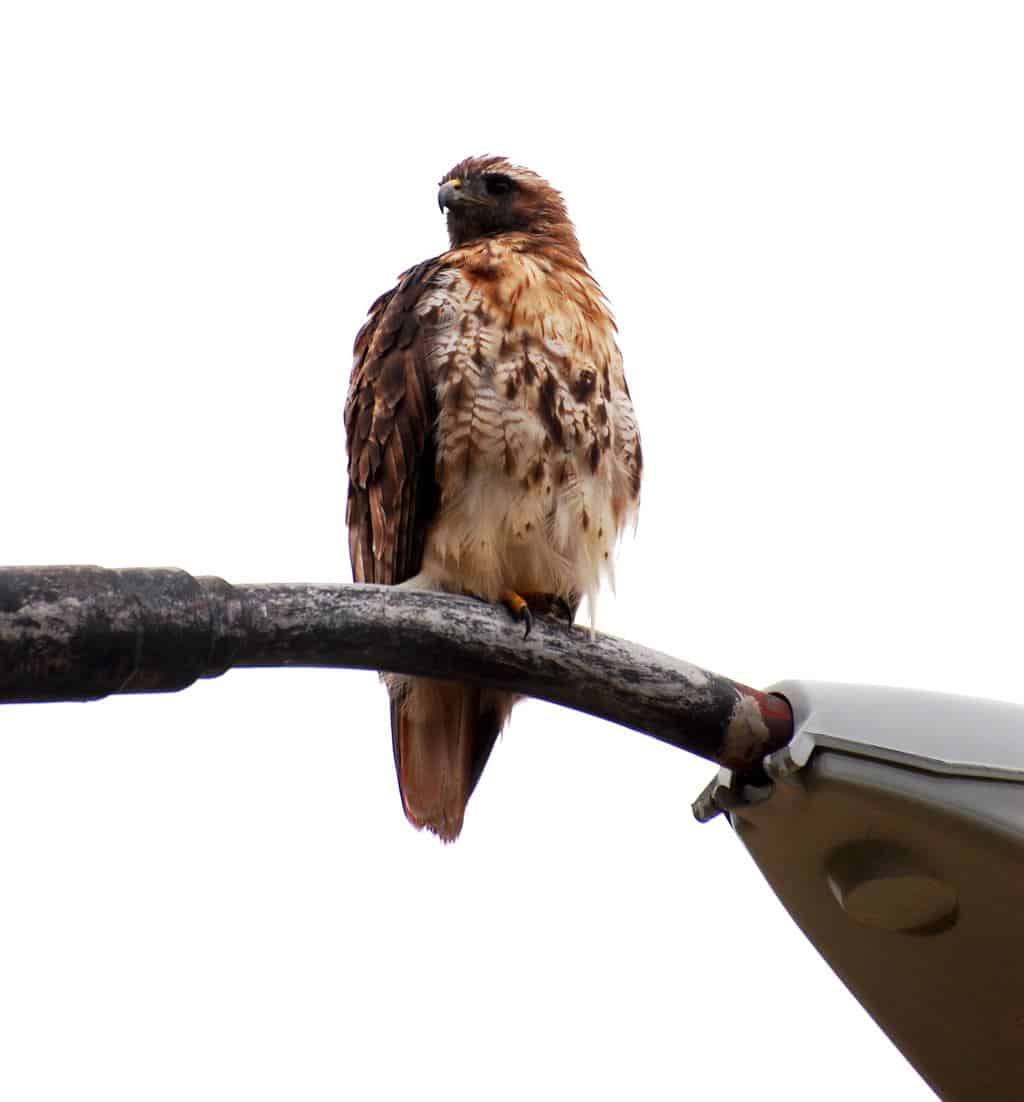
-
Scientific Name: Buteo platypterus
-
Length: 13 – 17 inches
-
Weight: 11 – 17 ounces
-
Wingspan: 32 – 36 inches
Though their wings are large, broad-winged hawks are actually rather small raptors, with their size falling somewhere between a crow and a goose. Adults of this species have reddish heads, striped underparts, and striped tails.
Although they nest near water, you’ll mostly find the broad-winged bird in deciduous or coniferous woodlands of North Carolina. They feed on frogs, lizards, small mammals, birds, and invertebrates.
The best time to see these Tar Heel State residents is at the beginning of fall when they fly in groups of thousands called kettles to Central and South America for the winter.
Wrap Up
Hawks are one of the defining features of North Carolina’s wildlife. It’s difficult not to admire their fierce attitudes and swift movements. In addition to hawks, the Old North State is also known for its colorful woodpeckers resting on tree trunks, so keep your eyes and ears open for these feathered percussionists.
Whether you’re aiming to admire or avoid these feathery hunters, always remember that hawks’ distribution is usually strongly associated with their feeding habits — they live where they can survive!

